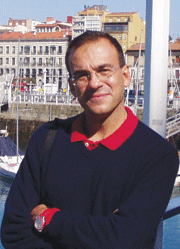E-Archive
Shot Peening in the Automotive Industry
in Vol. 12 - March Issue - Year 2011
Simulating Shot Peening Leads To Better Results

Mario Guagliano
The evolution of computers and the correspondent development of software able to create computational models simulating the behaviour of structural and machine elements have strongly changed the industrial engineers' design approach, allowing to accurately estimate the in-service behaviour and to decrease the traditional safety coefficients. This is true also for many technological processes that now can be better designed thanks to the ability of predicting the influence of different process parameters on the final result. Shot peening also was influenced by the development of finite element codes. First of all the ability of finite element codes to simulate the dynamic impact of a shot flow on a plastically deformable surface made it possible to estimate the residual stress field induced by the treatment and to define the relations between the treatment parameters and the induced residual stress field. In particular, it is now possible to relate the Almen intensity and the residual stresses that can be obtained with assigned shots and shot velocity with good approximation.
Indeed this kind of calculation is not easy since it involves different sources of non-linearity and if we want to get accurate results, a fine preparation of the model is necessary. Not only in terms of mesh development (element size, mesh density, element type..) but also as regards the material characterization, since a fine simulation of the material behaviour under impact loads that considers elasto-plastic deformation is not easy and needs data that cannot be not currently found in usual material datasheets. That is to say that most times the definition of a proper constitutive law of the material under this kind of load requires execution of dedicated experiments. Another limitation of these calculations is the computational time: a realistic simulation of shot peening including many shot impacts requires a long time. This can be a strong limitation, even if the models published until now show a good agreement with experiments in terms of residual stresses.
Anyway, the development of finite element models for residual stress calculation makes it possible to have a clear idea of the treatment results, thus strongly limiting the measurement and the experiments aimed to confirm that the residual stress field induced by shot peening is the desired one.
On the other hand in the automotive field, finite element simulations can be used also for obtaining more precise information about the in-service mechanical behaviour of machine elements taking shot peening effects into account. This is true not only in automotive industry, however it is highly appreciated in this industrial sector, where many machine elements have a complex geometry and are subjected to a complex load history.
Crankshafts, springs, gears, camshafts, and weldings are only examples of automotive parts that can be successfully peened. They have a complex shape and present a complex stress state under in-service loads. They are subjected to fatigue damage, and we know how dangerous this phenomenon is and how strongly it depends on the presence of compressive residual stresses in the surface layer of material. In these cases finite element simulations allow one to obtain the stress history in critical zones and, applied in combination with some appropriate fatigue strength assessment criterion, give an estimation of the ability of machine part to work without failing for the expected life-span of the car. But if we are able to introduce in this kind of simulation also the residual stress state due to shot peening, the estimation of the fatigue strength of peened parts will be finer, and it will be possible to set the treatment parameters to obtain the most effective residual stress field for a particular stress history in an assigned machine element.
It is common that companies ask for shot peening in such a way to obtain a desired in-depth residual stress profile and only with experimental measurements we are able to demonstrate that the treatment is the correct one to get the desired results. From this point of view this kind of approach can strongly limit the experimental effort, by addressing the definition of the treatment toward fewer parameter combinations to be experimentally investigated.
To come to the point the best way to use finite element simulations for shot peening application is not only related to the process simulation but also to the calculated residual stresses considered as input data for structural parts and machine elements simulation. This approach is not straightforward and criteria for fatigue life and strength assessment including residual stresses are still a research subject. Experiments cannot be avoided, but the application of finite element simulations can lead to better results, closer to the optimal treatment.
Shot Peening in the Automotive Industry
by Mario Guagliano
Contributing Editor MFN and
Associate Professor of Technical University of Milan
20156 Milan, Italy
E-mail: mario@mfn.li
Author: Mario Guagliano



























